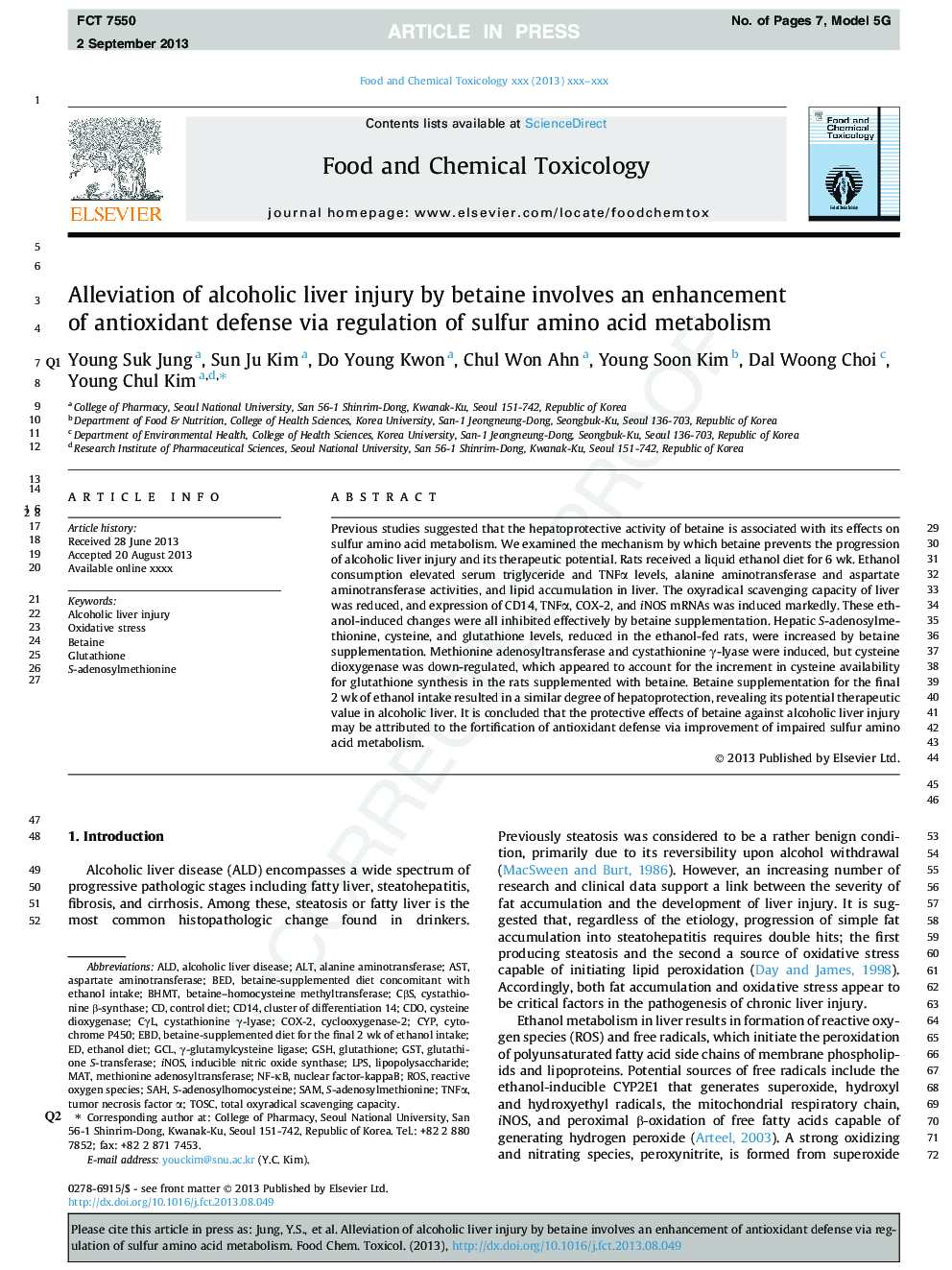| Article ID | Journal | Published Year | Pages | File Type |
|---|---|---|---|---|
| 5850348 | Food and Chemical Toxicology | 2013 | 7 Pages |
Abstract
Previous studies suggested that the hepatoprotective activity of betaine is associated with its effects on sulfur amino acid metabolism. We examined the mechanism by which betaine prevents the progression of alcoholic liver injury and its therapeutic potential. Rats received a liquid ethanol diet for 6 wk. Ethanol consumption elevated serum triglyceride and TNFα levels, alanine aminotransferase and aspartate aminotransferase activities, and lipid accumulation in liver. The oxyradical scavenging capacity of liver was reduced, and expression of CD14, TNFα, COX-2, and iNOS mRNAs was induced markedly. These ethanol-induced changes were all inhibited effectively by betaine supplementation. Hepatic S-adenosylmethionine, cysteine, and glutathione levels, reduced in the ethanol-fed rats, were increased by betaine supplementation. Methionine adenosyltransferase and cystathionine γ-lyase were induced, but cysteine dioxygenase was down-regulated, which appeared to account for the increment in cysteine availability for glutathione synthesis in the rats supplemented with betaine. Betaine supplementation for the final 2 wk of ethanol intake resulted in a similar degree of hepatoprotection, revealing its potential therapeutic value in alcoholic liver. It is concluded that the protective effects of betaine against alcoholic liver injury may be attributed to the fortification of antioxidant defense via improvement of impaired sulfur amino acid metabolism.
Keywords
CyPCOX-2SAMGCLEBDGSTGSHSAHALTCD14BHMTS-adenosylhomocysteineCβSLPSTOSCTNFαNF-κBiNOScystathionine γ-lyaseROSALDASTAspartate aminotransferaseAlcoholic liver injuryAlanine aminotransferaseS-adenosylmethionineBetainebetaine–homocysteine methyltransferaseBEDalcoholic liver diseaseOxidative stresstumor necrosis factor αcluster of differentiation 14cysteine dioxygenasecontrol dietinducible nitric oxide synthaseCytochrome P450cystathionine β-synthaseCyclooxygenase-2Total oxyradical scavenging capacitynuclear factor-kappaBlipopolysaccharideγ-glutamylcysteine ligaseMatmethionine adenosyltransferaseCDOGlutathioneglutathione S-transferaseReactive oxygen species
Related Topics
Life Sciences
Agricultural and Biological Sciences
Food Science
Authors
Young Suk Jung, Sun Ju Kim, Do Young Kwon, Chul Won Ahn, Young Soon Kim, Dal Woong Choi, Young Chul Kim,
